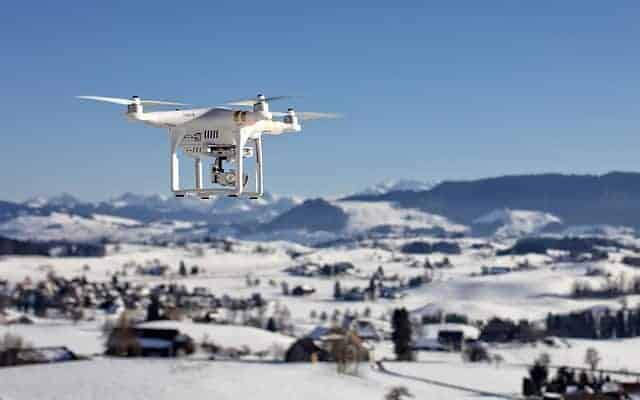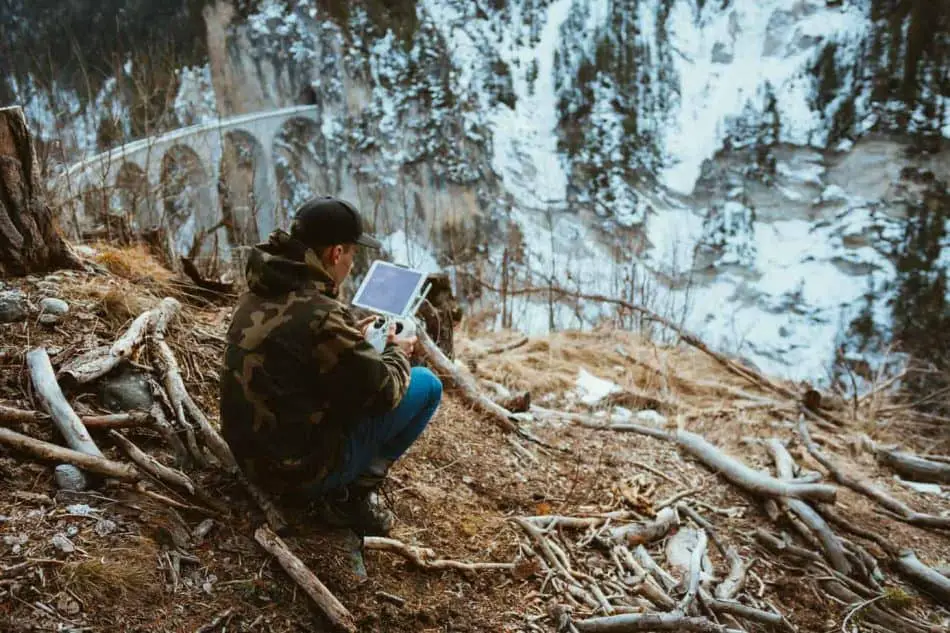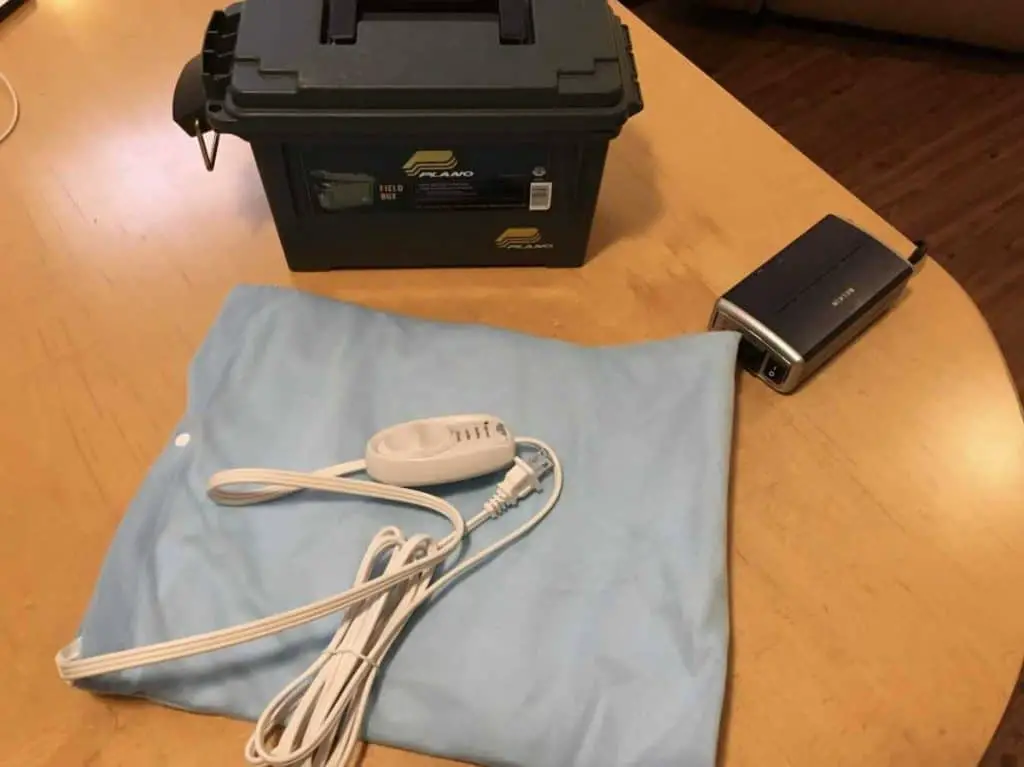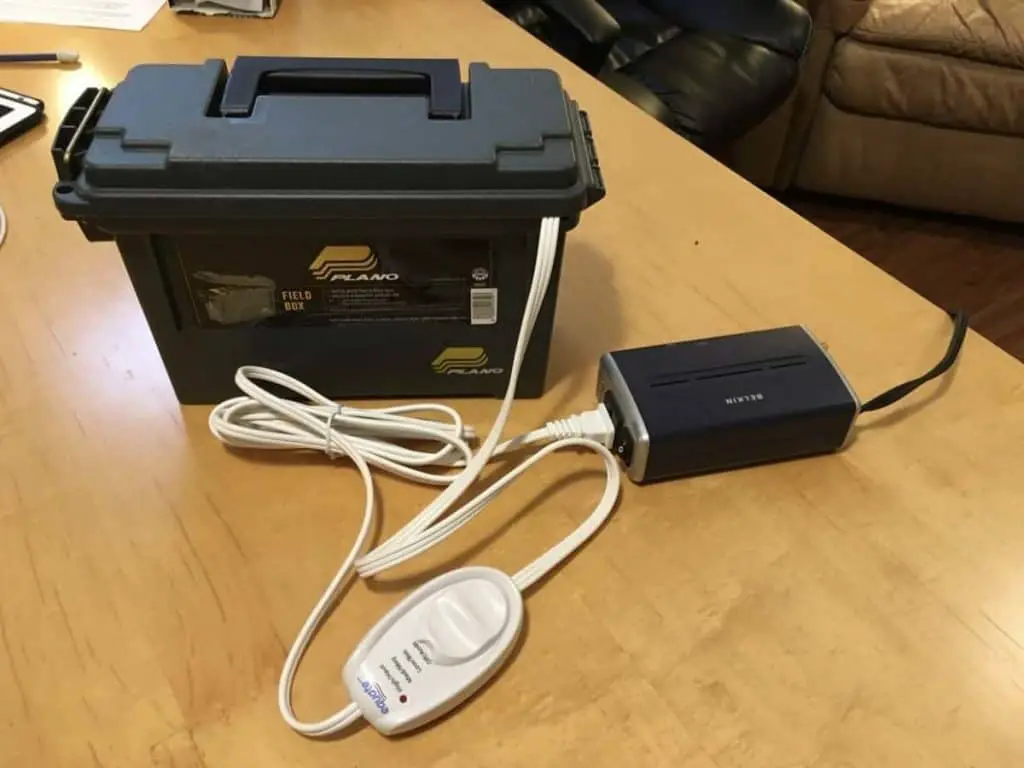
Can I Fly My Drone In Winter?
Depending on what hemisphere you’re in the weather may be turning cold. Likewise, if you travel and take your Drone to places like Alaska or Iceland, flying in cold temperatures can be tricky and a bit risky. But, the spectacular Winter pictures and videos are more than worth it.
Can I Fly My Drone In Winter?
It’s ok to fly your Drone in Winter, but the cold temperatures have an impact on your batteries, both for the Drone and the Devices you use to connect with. This can shorten flight times, significantly. Cold weather flight can be challenging. If you take some precautions you’ll have no problems
How Cold Is Too Cold To Fly a Drone?
First, check manufacturer specs. Get out the manual to see the recommended operating temperatures. My DJI Phantom 4 battery specs say – Operating Temperature Range: 32° to 104°F (0° to 40°C). This is, in my opinion from experience, the operating range to get maximum flight time and performance.
When it is cold outside it is different. I have flown in harsh Canadian winter conditions, -12C or 10.4F. I have heard of colleagues that have operated at 0F or -17C. That is very cold.
I’ve also had the opportunity to do some filming in the Mojave Desert, and it was HOT. (It was a dry heat). The common issues were my flight times. Both much shorter. I have a separate Post on Flying your Drone in the Heat.

Does Cold Weather Affect Drone Batteries?
I promised this website would leave out the tech mumbo jumbo so in basic terms, here’s what happens to a cold battery. Basically, LiPo (lithium polymer) batteries generate power with a chemical reaction.
Cold temperatures will affect this chemical reaction, reducing energy and in some cases resulting in a sudden drop in power, causing your Drone to plummet unexpectedly. In some instances, it may cause complete battery failure. This has never happened to me.
Here’s something to consider before you go flying in the cold. I always asked myself, can I keep my batteries warm(ish)? How far from the car will I be? Can I keep my Spare Batteries fairly warm while I’m flying? Keeping your Batteries warm solves a majority of your challenges.
Cold Weather Drone Battery Care Tips
Note: if you own a more expensive Drone, for example, a DJI product like the Inspire series, they may already come with heated batteries.
From my experiences keeping batteries warm is actually not that hard to do, if you like sticking them down your pants. HAHA Joke. (Not Recommended) If you have the correct gear, you can fly safely and focus on getting the shot or just enjoying the view.
Check out my Post on Battery Care Here on our Website
Below are a couple of pictures of what I used to heat up my batteries. It’s a Gun-shell Safety Box, an inexpensive heating pad and a power inverter for my car.
The Case I bought at (In Canada) Canadian Tire, and I’m sure you can find them all over the place in the States and elsewhere. The total was $20. I already had the converter the charge the batteries. It’s a rudimentary solution but it worked great.
Other ways to keep stuff warm.
Examples; Your cars heated seats if available, or defrost. You can use Hand Warmers, the kind you use when you go skiing or skating.
Just wrap the battery in cloth and avoid placing the hand warmer directly against the battery. I used a sock. You can check this link on Amazon for a variety of ideas. You may find something you like. Make sure you read reviews first.
The Many Challenges of Winter Flight
One challenge that didn’t occur to me at first was Propeller Efficiency. In Cold Air, it’s lower. Cold air, the same as at higher Altitudes is Thinner. Some props tend to be more flexible which results in lower efficiency.
They basically have to work harder to keep the Drone in the Air. This contributes to shorter flight times in the cold.
Another challenge is Weather
Flight Times, as we mentioned earlier are reduced for many reasons. The cold affects the batteries and the props, but Moisture in the air is always a worry.
If you’re at a higher altitude, in the clouds, or it’s a foggy day at the local park, you need to be cautious about getting the Drone wet. Try to avoid flying in the clouds as this is a good way for ice to build-up on the propellers and moisture to get on the motherboard.

How to Maximize Drone Flight Times In Cold Weather
Flying in the cold takes a bit more preparation but here are a few essential tips to help extend your flight time. Realize overall it will be a shorter flight, but these tips will help maximize air time.
- Keep Batteries Warm until flight time
- Hover for 1 -2 minutes Battery Temp = 20C
- Easy, slow Controller inputs
- Fully Charge Battery Before Each Flight
- Keep an eye on Battery Voltage (APP Feature)
PRO Tip. When you take off, Hover for about 1-2 minutes. This will warm up the Drone, and battery temp to around 20C which is ideal for flying. Also, during the Hover take a moment to do a flight check.
- Check Battery Charge
- Watch Battery Temperature
- Check Compass Calibration OK
- Check the number of connected Satellites
- SET the Home Point
- Check the Return to Home Altitude
Check Camera Settings
It’s always a good thing to recheck your setting for the camera as well. Look to see if you remembered the ND Filter and removed the camera gimbal!!
Your White Balance can be an issue when flying in the winter, especially on a really sunny day. Check your settings before takeoff.
In Winter I always use a Polar Pro ND Filter on my cameras. You can see a selection here on Amazon.

Mobile Device Cold Weather Battery Tips
We tend to focus on the Drones batteries, but we must remember your Controller, Phone, and tablet Battery as well. The controller is not as much of a problem as the Drone.
The controller does not work as hard, so the battery lasts longer. Just make sure it fully charged before you go.
Your phone or tablet battery will drain quickly. I always carry a little portable charger for my device to keep it topped up. You can find a variety of models here on Amazon. You may find something you like and always check the reviews first.
We have a Post about Caring for your Batteries on our Website
Keep Yourself Warm
We’ve been talking about keeping everything else warm, but what about you? There are lots of ways to keep warms while flying. The most critical parts to keep warm are your fingers. Numb thumbs are not a good thing!.
I use the hand warmers you can buy at the sports shop or here on Amazon. You can also check out the Tech Touch Glove while you’re there. They are great to use on your device while you fly to keep your fingers warm.
The batteries, after your flight, when you change them, you’ll notice they are nice and warm. I stuff mine in an inside coat pocket. (Not down your pants!)
Keep your eye on the weather.
One of the biggest concerns, when I flew in the winter, was the weather on the day of flying. If it’s sunny and cold, it’s not a problem. But if its overcast there can be moisture in the air.
This can be problematic for a Drone. Getting water inside the electronics can be fatal. I have flown, once, in a fog and ice formed on the props. Although nothing happened, it was an eye-opener. Always think safety.
Can it Be Too Cold To Fly A Drone?
Yes, I would say if the temperature gets down to 0F or -17.8C, it’s probably a good idea to stay home. At that temp, you are risking losing your Drone do to equipment failure, or it’s so unresponsive you actually ditch it into a tree, or worse.
Pro Tip If your Drone is under warranty, you may void it by flying in those conditions. That’s my experience anyway.
Let’s be honest here. Unless you have a bucket list shot you need to get, or you’re at a location you will never get back to, what’s the point. You probably won’t enjoy it, and you will freeze your Butt off.
One final item to think about
If you’re flying in Winter, take-off, and landing with snow is not suitable for the aircraft. I would highly recommend using a Mat or a Take Off Pad.
You can find the Mats at a Home Depot or Lowes, and the Drone Landing Pads are sold on Amazon. You may find one you like. They are not expensive and will save you some grief no matter where you fly from.
Bundle up for takeoff
I hope I have provided you with some useful tips and ideas for a safer and more enjoyable time winter flying. One thing I can tell you for sure.
On those early calm mornings after a fresh fluffy snowfall, with the trees covered in snow, the aerial views are spectacular. Once you’ve completed your first winter flight, you’ll be hooked.
I wish you a safe flight. Stay out of trees!


